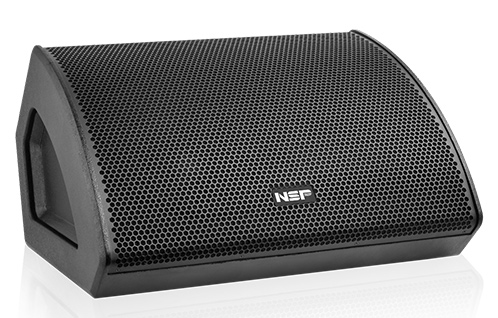Optimal Sound Through Proper Monitor Speaker Placement
Achieving the best sound quality in any listening or production environment starts with proper monitor speaker placement. Regardless of how advanced your audio equipment is, improper positioning can compromise its potential, distorting the soundstage and altering tonal accuracy. This guide will explore effective strategies for placing your monitor speakers to ensure optimal sound performance.

Why Monitor Speaker Placement Matters
Understanding the Role of Monitor Speakers
Monitor speakers are designed for accurate sound reproduction, making them essential in studios and critical listening environments. Unlike consumer speakers, which often color the sound, monitor speakers aim to deliver a flat frequency response. Proper placement ensures that this accuracy is preserved.
Effects of Poor Placement
Incorrect monitor speaker placement can lead to:
- Inaccurate Stereo Imaging: Sounds may appear off-center or muddled.
- Uneven Frequency Response: Certain frequencies may dominate or be lost.
- Listener Fatigue: Inconsistent sound can make long sessions uncomfortable.
The Fundamentals of Monitor Speaker Placement
Positioning Your Monitor Speakers at Ear Level
One of the most critical aspects of monitor speaker placement is aligning the tweeters with your ears. This ensures you capture the full frequency range without distortion.
Why Tweeter Alignment Matters
High frequencies are highly directional, and slight misalignment can affect clarity. Placing the tweeters at ear level ensures accurate treble delivery.
Creating an Equilateral Triangle
For stereo setups, position your monitor speakers and listening position to form an equilateral triangle.
Steps to Achieve This Setup:
- Measure the distance between your two monitor speakers.
- Place your listening position at the same distance from each speaker.
- Angle the speakers inward to point directly at your ears.
Maintaining Symmetry in the Room
Symmetry plays a crucial role in monitor speaker placement. Place your speakers equidistant from the walls to prevent uneven reflections that can alter the sound.
Optimizing Monitor Speaker Placement for Room Acoustics
Evaluating Your Room’s Acoustic Properties
Room acoustics significantly impact how sound waves behave, affecting the overall performance of your monitor speakers.
Factors to Consider:
- Room Shape: Irregular shapes can cause reflections and echoes.
- Wall Materials: Hard surfaces reflect sound, while soft surfaces absorb it.
- Furniture Placement: Large objects can block sound or create unwanted reflections.
Managing Bass Frequencies with Speaker Placement
Low frequencies are prone to buildup, especially near walls or corners. Placing monitor speakers too close to these areas can result in “boomy” bass.
Tips for Bass Management:
- Keep speakers at least 1-2 feet away from walls.
- Use bass traps or acoustic panels to absorb low-frequency energy.
Addressing Reflection Points
Reflections from surfaces like desks or walls can interfere with direct sound from your monitor speakers.
How to Identify Reflection Points:
- Use a mirror to locate points where sound bounces off surfaces directly to your ears.
- Treat these areas with acoustic panels or diffusers.
Advanced Techniques for Monitor Speaker Placement
Nearfield vs. Farfield Monitoring
Monitor speakers are often classified as nearfield or farfield, depending on their intended listening distance.
Nearfield Monitoring:
- Ideal for small rooms or personal studios.
- Position speakers 3-5 feet from the listening position.
Farfield Monitoring:
- Used in larger spaces.
- Requires greater distance for accurate sound reproduction.
Experimenting with Toe-In Angles
The angle at which your monitor speakers point toward your ears, known as the toe-in angle, can affect the soundstage.
Adjusting Toe-In:
- Start with speakers facing directly at your ears.
- Slightly adjust the angle to fine-tune the stereo image.
Using Isolation Pads
Isolation pads help reduce vibrations that can transfer to desks or stands, ensuring cleaner sound.
Benefits of Isolation Pads:
- Minimize low-frequency resonance.
- Improve clarity and focus.
Common Mistakes in Monitor Speaker Placement
Placing Speakers Too Close to Walls
While convenient, placing monitor speakers against a wall can result in exaggerated bass. Maintain some distance to allow for balanced sound.
Overlooking Listening Position
Your listening position is as important as your monitor speaker placement. Sit centered between the speakers, slightly back from the apex of the equilateral triangle.
Ignoring Calibration
Even with proper placement, monitor speakers require calibration for optimal performance. Use room correction tools or software to fine-tune the sound.
Enhancing Your Monitor Speaker Setup
Adding Subwoofers for Extended Bass
For genres requiring deep bass, a subwoofer can complement your monitor speakers.
Subwoofer Placement Tips:
- Place the subwoofer slightly off-center to reduce standing waves.
- Use a crossover to ensure seamless integration with your monitor speakers.
Utilizing Room Correction Software
Modern tools can analyze your room’s acoustics and automatically adjust your monitor speakers for optimal performance.
Popular Room Correction Tools:
- Sonarworks SoundID Reference
- IK Multimedia ARC System
Monitor Speaker Placement in Different Environments
Home Studios
Small spaces require careful attention to avoid reflections and bass buildup.
Tips for Home Studios:
- Use acoustic treatment for walls and ceilings.
- Consider nearfield monitors for closer listening.
Professional Studios
Larger rooms allow for more flexibility but require precise calibration.
Tips for Professional Studios:
- Use farfield monitors for broader sound dispersion.
- Incorporate multiple listening positions for versatility.
Multimedia Rooms
Monitor speakers in multimedia rooms must balance accuracy with usability for movies, gaming, and music.
Tips for Multimedia Rooms:
- Position speakers symmetrically around the primary seating area.
- Use adjustable stands for multi-purpose setups.
The Impact of Proper Monitor Speaker Placement
Placing your monitor speakers correctly is the cornerstone of achieving accurate sound reproduction. Whether you’re mixing music, editing audio, or simply enjoying high-quality playback, proper placement ensures a clear, balanced soundstage.
With careful attention to details like ear alignment, room acoustics, and symmetry, your monitor speakers can deliver their full potential. Experiment, calibrate, and fine-tune your setup for an unparalleled audio experience.
Investing time in monitor speaker placement will elevate your sound quality, making every listening session more immersive and every production more precise. Take the first step today, and unlock the true power of your audio system!